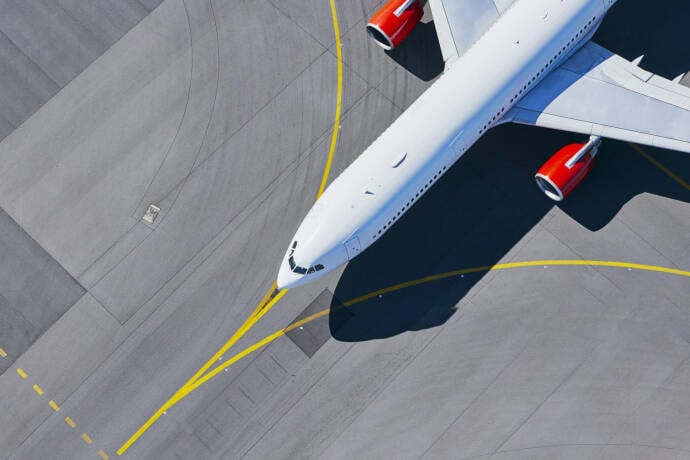

Safety
Automation holds the key to scalability, but air navigation service providers should take a balanced approach.






Marie-Pier Berman, Vice-President and Chief of Operations, NAV CANADA



One of the primary concerns is the risk of over-reliance on automation,” says Marie-Pier Berman, Vice-President and Chief of Operations, NAV CANADA. “When systems operate reliably, it creates an environment of trust and stability. However, maintaining active engagement and vigilance among human operators remains essential to ensuring rapid and effective responses in the rare event of a system failure.”
There are a number of factors at work. Although automation can enhance efficiency, minimise errors and allow humans to take on more strategic roles, it also introduces such safety challenges as adaptability in the workforce, digital literacy and decision making.
As automation continues to transform the aviation industry, ensuring safety remains a top priority.


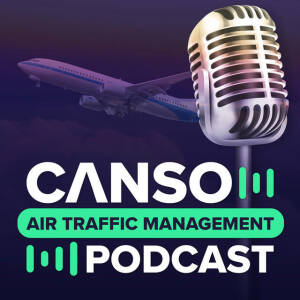
Listen to the full podcast here
Check out a clip from the latest CANSO Air traffic Management Podcast episode
Through comprehensive training, system transparency and strong safety management frameworks, we can ensure that automation enhances safety rather than introduces new risks,” she says.
Maintaining situational awareness and manual proficiency in less frequently performed tasks is critical to ensuring that human operators can effectively intervene when needed. There is the possibility that automation will even play a role during system failure, reverting to basic functionality through a process known as graceful degradation but Berman stresses that human-machine interaction is the focus right now.
Berman therefore recommends air navigation service providers (ANSPs) take abalanced approach to automation, leveraging its benefits while reinforcing human adaptability and decision-making capabilities.
NAV CANADA, for example, is adopting a human-centred strategy when it comes to technology development. Its focus is on complementing, supporting and refining the expertise of its air traffic services professionals, equipping them with the most accurate or data-based information and conflict detection capabilities.
“We must ensure that training programmes evolve to ensure that human operators have the necessary skillset to focus not only on how to operate automated systems but also on how and when to question or override them,” Berman notes.


Ensuring safety in automation requires both technical innovation and sound governance and oversight. Only by addressing these aspects together is it possible to create reliable, efficient and well-regulated systems that enhance overall safety and performance.
From a technical standpoint, although automation is advancing rapidly there is still a long road ahead. Advances in artificial intelligence (AI) and machine learning (ML) will need to be carefully managed. Transparency and predictability are essential in all systems so refining algorithms will be an ongoing challenge. And for many ANSPs, there will be the customary developmental headache of integration with legacy systems.
ANSPs must play their part and maintain their robust safety culture and safety data infrastructure to enable the identification of emerging trends. Safety data intelligence will allow them to make evidence-based decisions regarding automation and so aid regulatory work.
“Although automation brings technical complexities, its true potential lies in how we govern, regulate and implement these technologies to enhance safety and efficiency,” says Berman.
Regulators must be cognizant of these challenges and take a proactive and flexible approach, says Berman. The industry’s investments in improving the transportation system should not be hindered by outdated regulatory frameworks.
“Regulators must continuously reassess their ability to facilitate and manage change while upholding their core oversight responsibilities,” she says.



TBO is another good example, bringing an integrated gate-to-gate flight planning and operations environment that will reduce delays, support efficient routing and the introduction of new entrants. Safety and sustainability will both benefit.
“In a similar way, the implementation of time-base separation (TBS) at Canada’s busiest airport, Toronto Pearson International Airport, has allowed NAV CANADA to safely optimise runway capacity, delivering better on-time performance while also reducing carbon emissions, especially during headwinds conditions,” says Berman.
The tool calculates optimal time intervals between arrivals using key information, such as wind data and the type of aircraft involved. The data generated by TBS then appears on controllers’ radar screens, integrating technology into the human-centric decision-making process.
NAV CANADA is just scratching the surface of what automation and AI have the potential to do in terms of revolutionising air traffic control. The aim is to support its staff in improving operational safety, increasing efficiency and reducing emissions across the entire Canadian aviation industry. There is little doubt, however, that automation will be integral to scalability.
Already, leveraging new technology has delivered significant safety and efficiency enhancements for NAV CANADA customers. Berman stresses the “A” in ADS-B (automatic dependent surveillance – broadcast). Space-based ADS-B is a major leap in safety and enables early warnings and alerts for controllers should an aircraft unexpectedly deviate. It also supports improved emergency response for tracking and locating aircraft in distress – especially important in Canada with its many remote areas and oceanic airspace.

Although the benefits of automation and AI have universal application, ANSP operations vary widely across the world. Alongside operational differences, regulatory environments, investment needs; infrastructure readiness and workforce capabilities must also be considered.
Unsurprisingly, next-generation automation is being most keenly explored in high traffic density regions, such as Europe and North America. Concepts such as trajectory-based operations (TBO) will rely on AI-driven decision-support tools and will be critical to managing growing air traffic volumes safely and efficiently.
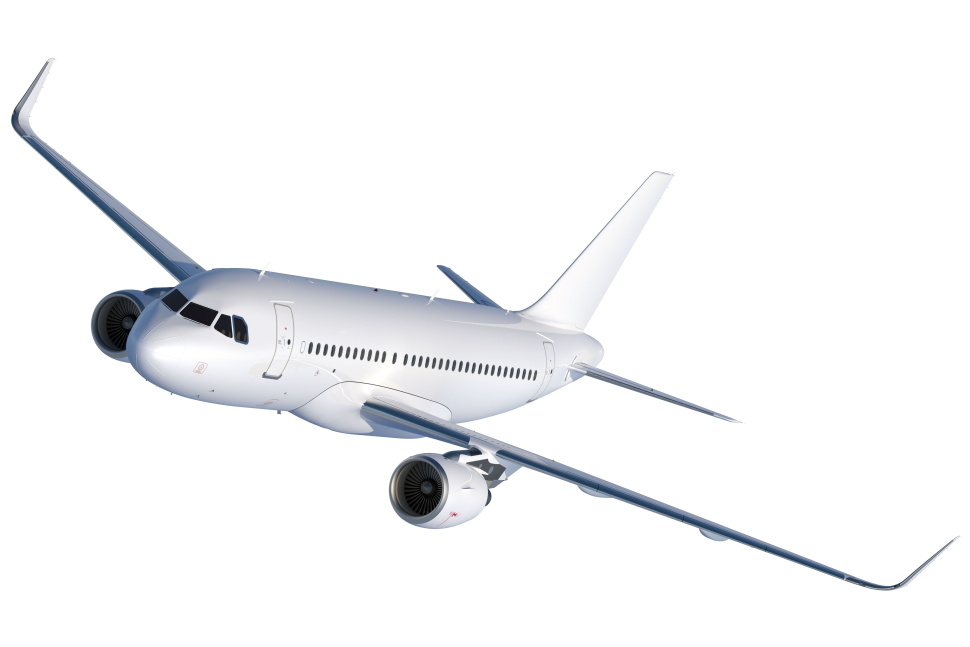
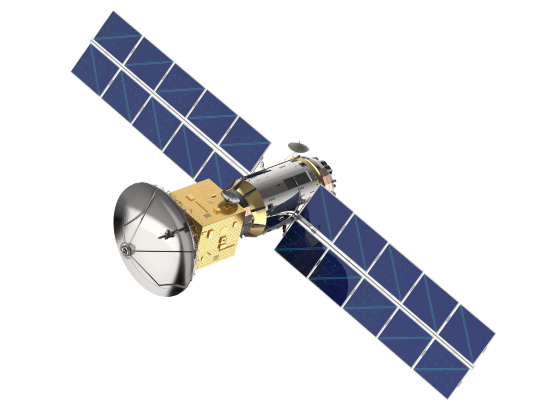


Close

Marie-Pier Berman, Vice-President and Chief of Operations, NAV CANADA

“The future of automation in aviation depends on collaborative leadership, shared standards and a proactive regulatory approach,” concludes Berman. “By working together – rather than in silos – the industry can accelerate safe automation adoption while maintaining the highest safety standards. We must bring together regulators, industry leaders, and technology innovators to align priorities, standardise processes and build a safer, smarter aviation ecosystem.”
But Berman insists this is an unavoidable fact of life. “Safety is at the core of every decision and should never be compromised,” she stresses. “Any technological advancement must uphold or enhance existing safety standards throughout the implementation process. Although safety requirements extend timelines, they are a necessary safeguard. The ANSP’s challenge is to balance innovation with risk management, ensuring that automation enhances safety rather than introducing new, unforeseen risks.”
But to facilitate speed as much as possible, industry guidance, collaboration and harmonisation are critical. A coordinated, multi-stakeholder approach through CANSO would create a shared vision for automation and evidence-based decision in safety.
Aviation operates under extremely stringent safety and regulatory standards and – with safety always the top priority – rightly so. But it does mean any new automation technology must undergo rigorous testing, simulation, certification, and validation before implementation into a live operational environment. With safety risk management so essential, timelines can be long.



Safety

Automation holds the key to scalability, but air navigation service providers should take a balanced approach.




One of the primary concerns is the risk of over-reliance on automation,” says Marie-Pier Berman, Vice-President and Chief of Operations, NAV CANADA. “When systems operate reliably, it creates an environment of trust and stability. However, maintaining active engagement and vigilance among human operators remains essential to ensuring rapid and effective responses in the rare event of a system failure.”
Marie-Pier Berman, Vice-President and Chief of Operations, NAV CANADA





There are a number of factors at work. Although automation can enhance efficiency, minimise errors and allow humans to take on more strategic roles, it also introduces such safety challenges as adaptability in the workforce, digital literacy and decision making.
As automation continues to transform the aviation industry, ensuring safety remains a top priority.


Check out a clip from the latest CANSO Air traffic Management Podcast episode
Listen to the full podcast here



Through comprehensive training, system transparency and strong safety management frameworks, we can ensure that automation enhances safety rather than introduces new risks,” she says.
Berman therefore recommends air navigation service providers (ANSPs) take abalanced approach to automation, leveraging its benefits while reinforcing human adaptability and decision-making capabilities.
NAV CANADA, for example, is adopting a human-centred strategy when it comes to technology development. Its focus is on complementing, supporting and refining the expertise of its air traffic services professionals, equipping them with the most accurate or data-based information and conflict detection capabilities.
“We must ensure that training programmes evolve to ensure that human operators have the necessary skillset to focus not only on how to operate automated systems but also on how and when to question or override them,” Berman notes.
Maintaining situational awareness and manual proficiency in less frequently performed tasks is critical to ensuring that human operators can effectively intervene when needed. There is the possibility that automation will even play a role during system failure, reverting to basic functionality through a process known as graceful degradation but Berman stresses that human-machine interaction is the focus right now.

Regulators must be cognizant of these challenges and take a proactive and flexible approach, says Berman. The industry’s investments in improving the transportation system should not be hindered by outdated regulatory frameworks.
“Regulators must continuously reassess their ability to facilitate and manage change while upholding their core oversight responsibilities,” she says.


ANSPs must play their part and maintain their robust safety culture and safety data infrastructure to enable the identification of emerging trends. Safety data intelligence will allow them to make evidence-based decisions regarding automation and so aid regulatory work.
“Although automation brings technical complexities, its true potential lies in how we govern, regulate and implement these technologies to enhance safety and efficiency,” says Berman.
Ensuring safety in automation requires both technical innovation and sound governance and oversight. Only by addressing these aspects together is it possible to create reliable, efficient and well-regulated systems that enhance overall safety and performance.
From a technical standpoint, although automation is advancing rapidly there is still a long road ahead. Advances in artificial intelligence (AI) and machine learning (ML) will need to be carefully managed. Transparency and predictability are essential in all systems so refining algorithms will be an ongoing challenge. And for many ANSPs, there will be the customary developmental headache of integration with legacy systems.



NAV CANADA is just scratching the surface of what automation and AI have the potential to do in terms of revolutionising air traffic control. The aim is to support its staff in improving operational safety, increasing efficiency and reducing emissions across the entire Canadian aviation industry. There is little doubt, however, that automation will be integral to scalability.
Already, leveraging new technology has delivered significant safety and efficiency enhancements for NAV CANADA customers. Berman stresses the “A” in ADS-B (automatic dependent surveillance – broadcast). Space-based ADS-B is a major leap in safety and enables early warnings and alerts for controllers should an aircraft unexpectedly deviate. It also supports improved emergency response for tracking and locating aircraft in distress – especially important in Canada with its many remote areas and oceanic airspace.
Although the benefits of automation and AI have universal application, ANSP operations vary widely across the world. Alongside operational differences, regulatory environments, investment needs; infrastructure readiness and workforce capabilities must also be considered.
Unsurprisingly, next-generation automation is being most keenly explored in high traffic density regions, such as Europe and North America. Concepts such as trajectory-based operations (TBO) will rely on AI-driven decision-support tools and will be critical to managing growing air traffic volumes safely and efficiently.
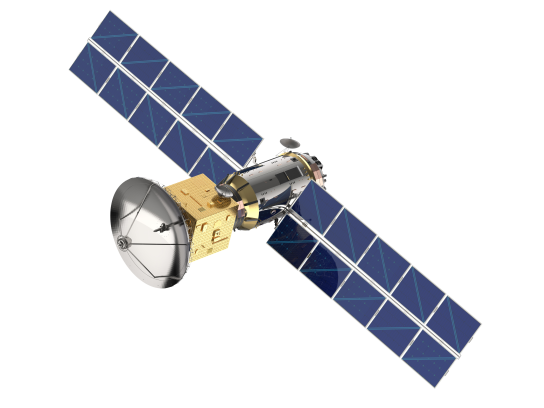
TBO is another good example, bringing an integrated gate-to-gate flight planning and operations environment that will reduce delays, support efficient routing and the introduction of new entrants. Safety and sustainability will both benefit.
“In a similar way, the implementation of time-base separation (TBS) at Canada’s busiest airport, Toronto Pearson International Airport, has allowed NAV CANADA to safely optimise runway capacity, delivering better on-time performance while also reducing carbon emissions, especially during headwinds conditions,” says Berman.
The tool calculates optimal time intervals between arrivals using key information, such as wind data and the type of aircraft involved. The data generated by TBS then appears on controllers’ radar screens, integrating technology into the human-centric decision-making process.

“The future of automation in aviation depends on collaborative leadership, shared standards and a proactive regulatory approach,” concludes Berman. “By working together – rather than in silos – the industry can accelerate safe automation adoption while maintaining the highest safety standards. We must bring together regulators, industry leaders, and technology innovators to align priorities, standardise processes and build a safer, smarter aviation ecosystem.”
But Berman insists this is an unavoidable fact of life. “Safety is at the core of every decision and should never be compromised,” she stresses. “Any technological advancement must uphold or enhance existing safety standards throughout the implementation process. Although safety requirements extend timelines, they are a necessary safeguard. The ANSP’s challenge is to balance innovation with risk management, ensuring that automation enhances safety rather than introducing new, unforeseen risks.”
But to facilitate speed as much as possible, industry guidance, collaboration and harmonisation are critical. A coordinated, multi-stakeholder approach through CANSO would create a shared vision for automation and evidence-based decision in safety.
Aviation operates under extremely stringent safety and regulatory standards and – with safety always the top priority – rightly so. But it does mean any new automation technology must undergo rigorous testing, simulation, certification, and validation before implementation into a live operational environment. With safety risk management so essential, timelines can be long.


Marie-Pier Berman, Vice-President and Chief of Operations, NAV CANADA



